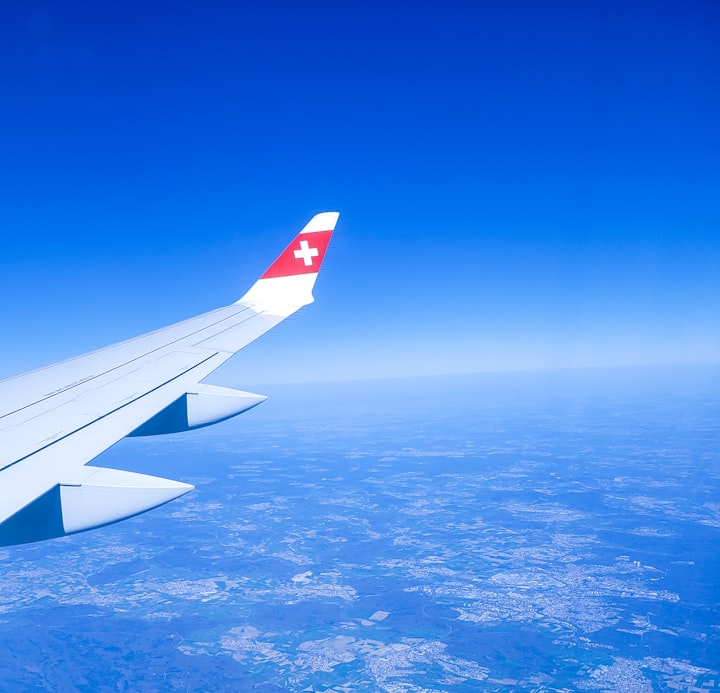How To Make Flying A Lot Safer
How Technology Can Save Thousands of Lives

Over the last few weeks I have been avidly watching Air Investigation programmes about plane crashes. During this time I was shocked to discover that seventy percent of plane crashes are down to human error. Ground maintenance crews, air traffic control and pilots are all to blame for almost three quarters of planes crashes that result in a great loss of life. And the shame of it is that many of those crashes were totally avoidable if the airline industry had applied a little bit of thought. What's more, there is still time to do something about it.
One common cause of aeroplane of crashes is the pilots failing to configure the aircraft correctly for takeoff. In particular, pilots forgetting to extend the flaps. If you ever look out of the window at the wings of a plane during take-off or landing, you will see the flaps in action. What they do is increase the size of the wing and the angle of attack. This ensures that during take-off, the aircraft has sufficient lift to get it off the ground. If the pilot forgets to extend the flaps, that plane is going nowhere except the end of the runway.
How on earth can a pilot forget to extend the flaps? All too easily I'm afraid. On one aircraft, as the plane was taxi-ing towards the runway, the pilots were doing their pre-flight checks and at the same having to deal with communications with ATC. They got distracted to the point that they simply forgot to extend the flaps.
Another time the pilots were engaging in social conversation and flirting with a flight attendant whilst doing the pre-flight check. Again, they simply forgot to extend the flaps. In both cases the planes crashed at the end of the runway and all lives were lost.
Ok, I'm no avionics expert, but here's a very simple solution to that problem. Make it impossible for the aircraft to set off down the runway unless the flaps are extended. It would not be too difficult to programme the aircraft's engine power to be cut, or for the engines to be put into reverse thrust, and the brakes to be applied long before it gets too far down the runway without the flaps extended. It's not rocket science.
Once the flight crew board a plane they are supposed to maintain a sterile cockpit. That means the only conversation allowed is to do with the safe operation of the aircraft. Of course, many flight crew all too easily forget this, very much to the cost of the lives of all on board. Again, there is an easy fix for this.
There is an onboard recorder of everything that is said in a cockpit. Simply have somebody check that recording and heavily financially penalise any crew found to be chit chatting about their social or private lives during takeoff and landing.
Another very common problem is aircraft stalling and literally falling out of the sky. A stall happens when an aircraft fails to maintain sufficient airflow underneath the wings to keep it up. This lack of airflow is a result of insufficient velocity and connected to the angle of the aircraft as it moves forward through the air. If the nose of the aircraft comes up too high, higher than 15 percent from the horizontal line, then that results in compromising the amount of lift and the plane will begin to fall. It is like applying the brakes on your car until it comes to a dead stop, do that on a plane and that 300 ton beauty will drop like a brick.
When a plane is going into a stall, for a few brief moments it is entirely possible to make a full recovery. First the pilot will get a very strong physical warning in the form of something called stick-shake. The joy sick will begin to shake quite violently to grab the pilot's attention. When that starts all the pilot has to do is push the stick forward to push the nose down and at the same time increase the engine power. The plane will go into a bit of a dive, but when the plane has sufficient speed and airflow, then he can pull the nose back up into level flight and all is well, a disaster has been averted. The passengers may be a little shaken up and even have some very minor injuries, like a burned hands from hot coffee spillage, but they will live to tell the tale.
Here's what really happens; the stick shakes and the pilot knowing what that means, goes into panic mode. In many cases the pilot does the exact opposite of what he is supposed to do, dooming the aircraft to a very unpleasant end. The pilot grabs a hold of the stick and instead of pushing it forward, which may seem counter intuitive, he pulls the stick back towards his chest. The minute he does that he's done for. That will simply pitch the nose up even higher, producing even less flow and lift, and down she goes, goodnight Vienna.
Here's an idea, why not take control away from the pilot and let the onboard computer execute the recovery. I am sure it would not be too difficult to configure a computer to take over the aircraft when certain parameters are in place. Surely too steep a dive ought to be enough to trigger a computerised recovery.
Here's the thing, we have the technology for these changes I mentioned to be implemented, and for sure I am not the first one to think of it. So the question is why has nothing been done about it? Is it the usual story of aircraft manufacturers not being willing to invest in this type of life saving technology? Is it the case that the cost of developing and implementing the technology is far greater than the cost of human lives? I hate to think so, but I cannot for the life of me think of any other laudable reason.
To conclude on a somewhat more comforting note, flying is still the safest form of travelling. Statistically, you are more likely to die in a car crash going a short distance to work. However, that is small comfort for the families of lost loved ones who died simply because he or she trusted a pilot to fly the bloody aircraft instead of chatting about what he's going to do with that pretty flight attendant after they land.
About the Creator
Adam Evanson
I Am...whatever you make of me.






Comments
There are no comments for this story
Be the first to respond and start the conversation.